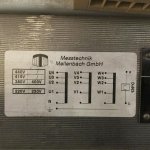Aryan165
Plastic
- Joined
- Apr 24, 2017
- Location
- United Kingdom
Hi,
This is another thread on RPC balancing I know, but I've read lots of threads about it here and RPC leg balancing using transformers between individual legs isn't discussed much (sure it is mentioned from time to time). I know capacitors are usually used for balancing like the Fitch Williams design.
The Object is to boost the 2 ''generated'' voltages so they don't drop too low under load, staying closer to the ''pass through'' voltage supplied by the incoming 240V single phase. I've heard of using buck/boost transformers to boost it by say 32V, but in the UK buck/boost transformers don't seem to be as ubiquitous as they are in the US (thinking of the usual gray Acme / GE ones).
Wondering if variacs can be substituted in place of dedicated buck/boost transformers?
10 hp idler, powering 3-5 hp machines, I'm thinking 2x 3kVA variacs (on RPC output), between lines A-C and B-C (A-B being across the single phase incoming). I'm thinking larger than necessary variacs to keep impedance down.
Does this sound reasonable or am I making a gross mistake regarding number of transformers, how they are connected, transformer siz etc?
Any assistance is appreciated!
This is another thread on RPC balancing I know, but I've read lots of threads about it here and RPC leg balancing using transformers between individual legs isn't discussed much (sure it is mentioned from time to time). I know capacitors are usually used for balancing like the Fitch Williams design.
The Object is to boost the 2 ''generated'' voltages so they don't drop too low under load, staying closer to the ''pass through'' voltage supplied by the incoming 240V single phase. I've heard of using buck/boost transformers to boost it by say 32V, but in the UK buck/boost transformers don't seem to be as ubiquitous as they are in the US (thinking of the usual gray Acme / GE ones).
Wondering if variacs can be substituted in place of dedicated buck/boost transformers?
10 hp idler, powering 3-5 hp machines, I'm thinking 2x 3kVA variacs (on RPC output), between lines A-C and B-C (A-B being across the single phase incoming). I'm thinking larger than necessary variacs to keep impedance down.
Does this sound reasonable or am I making a gross mistake regarding number of transformers, how they are connected, transformer siz etc?
Any assistance is appreciated!




